UNIT 3- Aggregate Demand and Supply
Aggregate Demand (AD)
Aggregate Demand
Aggregate demand = the relationship between the quantity of goods and services demanded and the price level
Aggregate Demand Curve
Differs from the curve of an individual product because there’s no substitution effect
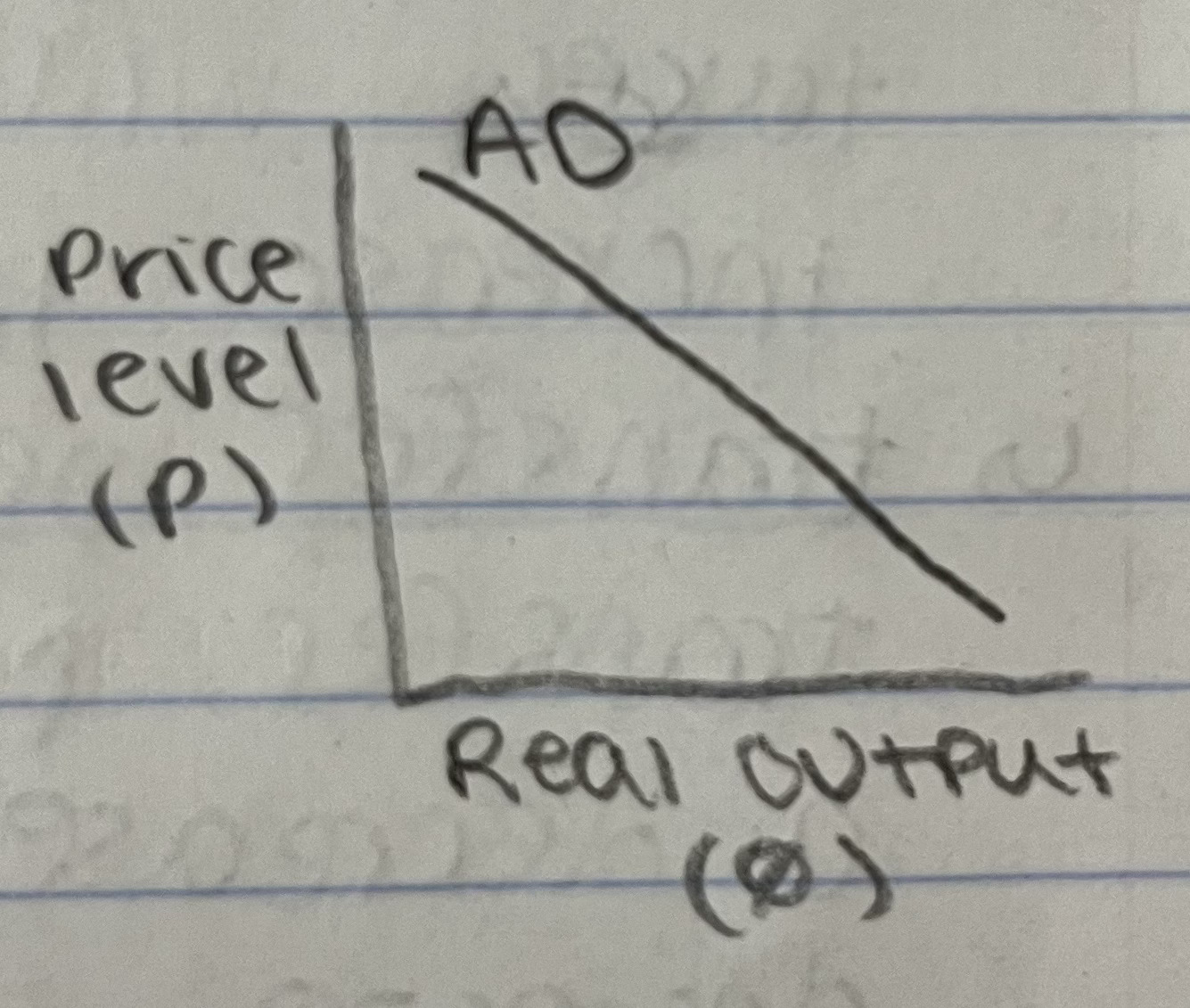
Downward sloping curve
real balance effect → as the price level falls, cash balances (money people hold) will purchase more
at a low price level, the money you have will buy more
interest rate effect → lower price levels will lower interest rate, which changes investment
Keynes Effect → price level changes interest rate, which changes investment
foreign purchases effect → lower prices make domestic goods more attractive than foreign goods
lower prices increases net exports
Determinants of Aggregate Demand (AD Shifters)
Changes in consumption
consumer confidence → if consumers are confident about the economy, there will be an increase in aggregate demand
tax policy → a decrease in income taxes will increase consumption; an increase in tax will decrease consumption
transfer payments → an increase in transfer payments will increase consumption; a decrease in transfer payments will decrease consumption
inflationary expectations → if consumers expect higher prices in the future, there will be an increase in consumption; if consumers expect lower prices in the future, there will be a decrease in consumption
Changes in investment
expectation of the business firm → if business firms are confident in the economy, there will be an increase in investment; if they’re pessimistic, they’ll decrease investment
changes in interest rate → if interest rates decrease, investment will increase; if interest rates increase, investment will decrease
government policies effect interest rates
Changes in government purchases
an increase in government spending increases aggregate demand
a decrease in government spending decreases aggregate demand
Changes in net exports
an increase in net exports will increase aggregate demand
a decrease in net exports will decrease aggregate demand
Aggregate Supply (AS)
Aggregate Supply
Aggregate supply = the relationship between the output produced and the price level
Aggregate Supply Curve (Short Run)
In the short run, prices and wages are not flexible downward
they’re “sticky”
In the short run, there can be periods of unemployment
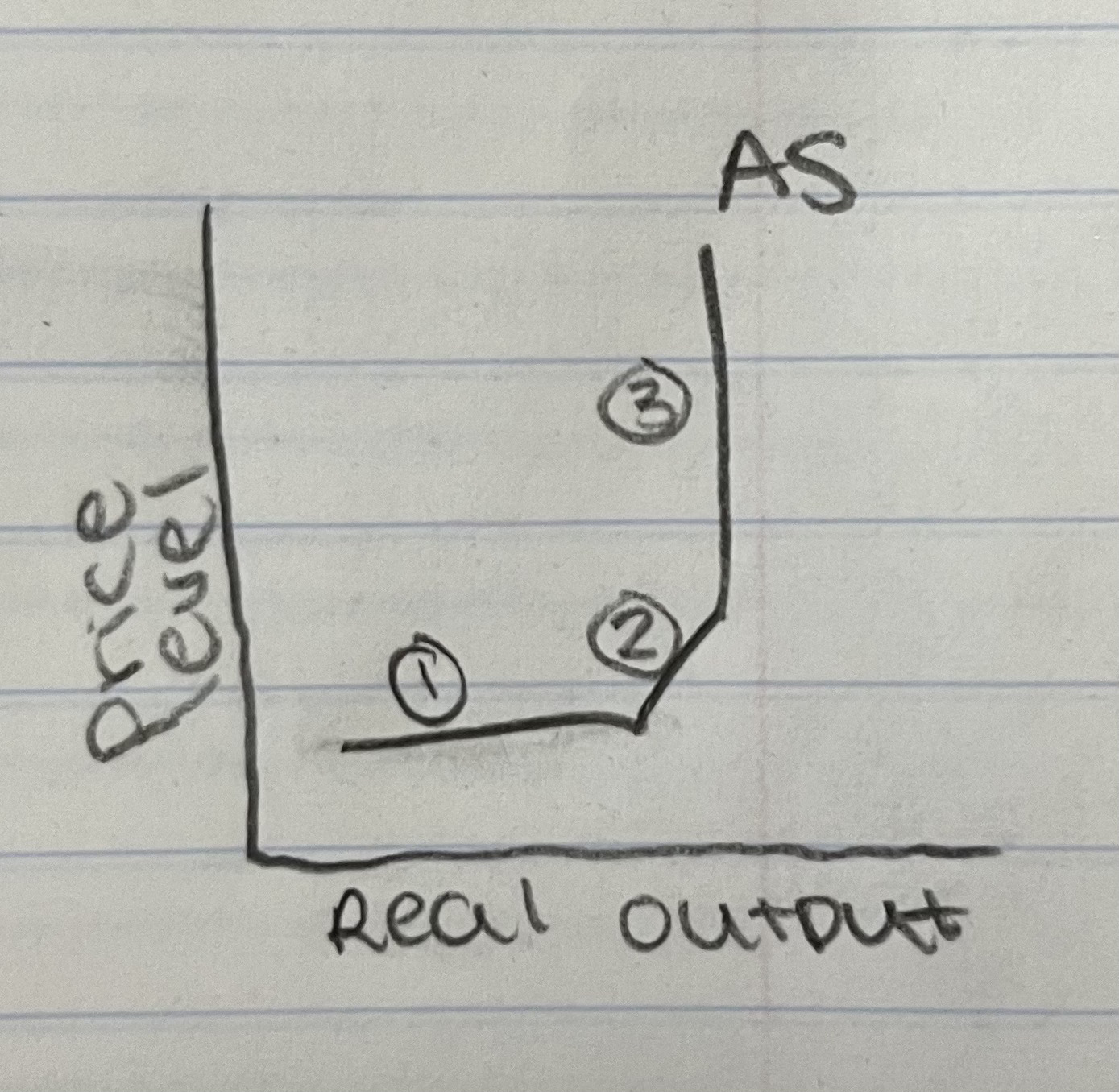
Horizontal/Keynesian Range → low levels of output; unemployment; recession; you can increase output, price levels don’t change
Intermediate Range → economy is nearing full employment; price levels start to go up
Vertical/Classical Range → full employment in the short run; you can’t generate anymore output
Determinants of Aggregate Supply (AS Shifters)
Prices of inputs
resources, wages, energy costs
price of inputs increases, aggregate supply decreases
price of inputs decreases, aggregate supply increases
Productivity and technology
if workers become more productive/develop better technology, aggregate supply will increase
Available supplies of labor and capital
if labor force grows or improves in quality, aggregate supply will increase
if capital stock increases, aggregate supply increases
if supply of natural resources increases, aggregate supply increases
Government regulations
if the government regulates industry more strictly, aggregate supply will decrease
if the government eases regulations, aggregate supply increases
government regulation is a cost of production
Business taxes
cost of production
business taxes increase, aggregate supply decreases
business taxes decrease, aggregate supply increases
Government subsidies
if the government cuts subsidies to businesses, aggregate supply decreases
if the government raises subsidies to businesses, aggregate supply increases
subsidies = funding; giving money to
Reduce taxes on savings
capital gains = profit after the selling of an asset
capital gains get taxed
dividends = amount that companies give back to shareholders
dividends get taxed
interest → earning interest on money that gets taxed
Equilibrium of Aggregate Demand and Supply
Increase in Aggregate Demand
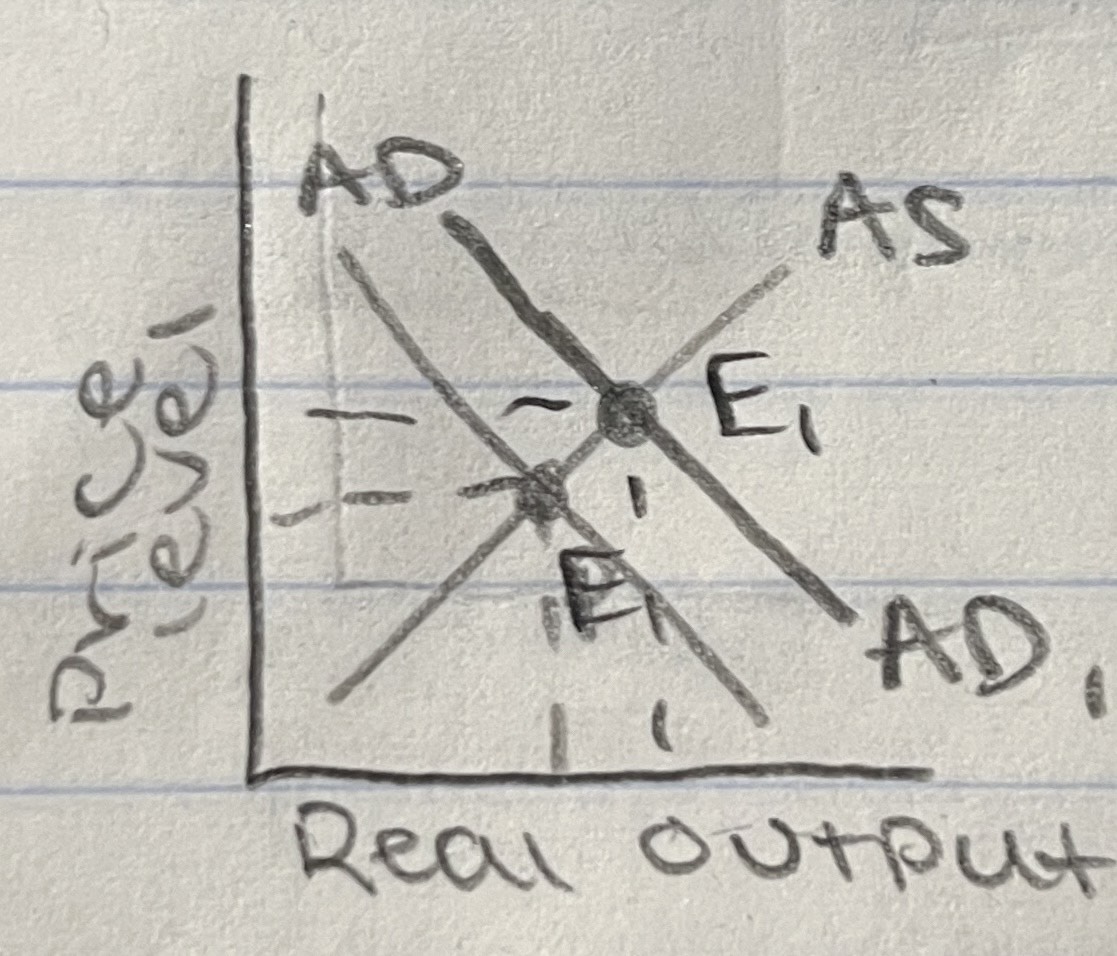
Price level increases
Output increases
Employment increases
Output and employment are tied
output goes up, employment goes up
output goes down, unemployment goes up
Decrease in Aggregate Demand
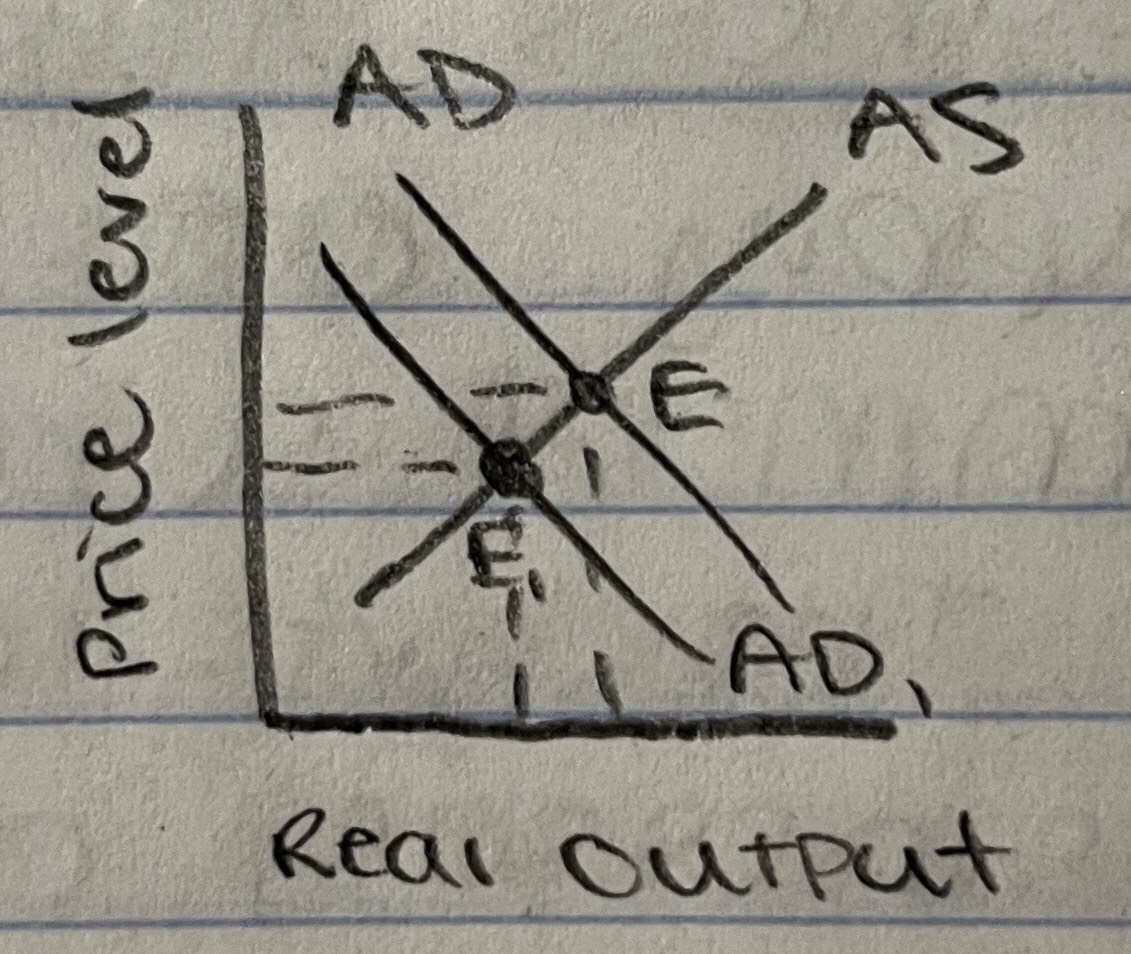
Price level decreases
Output decreases
Employment decreases
Increase in Aggregate Supply
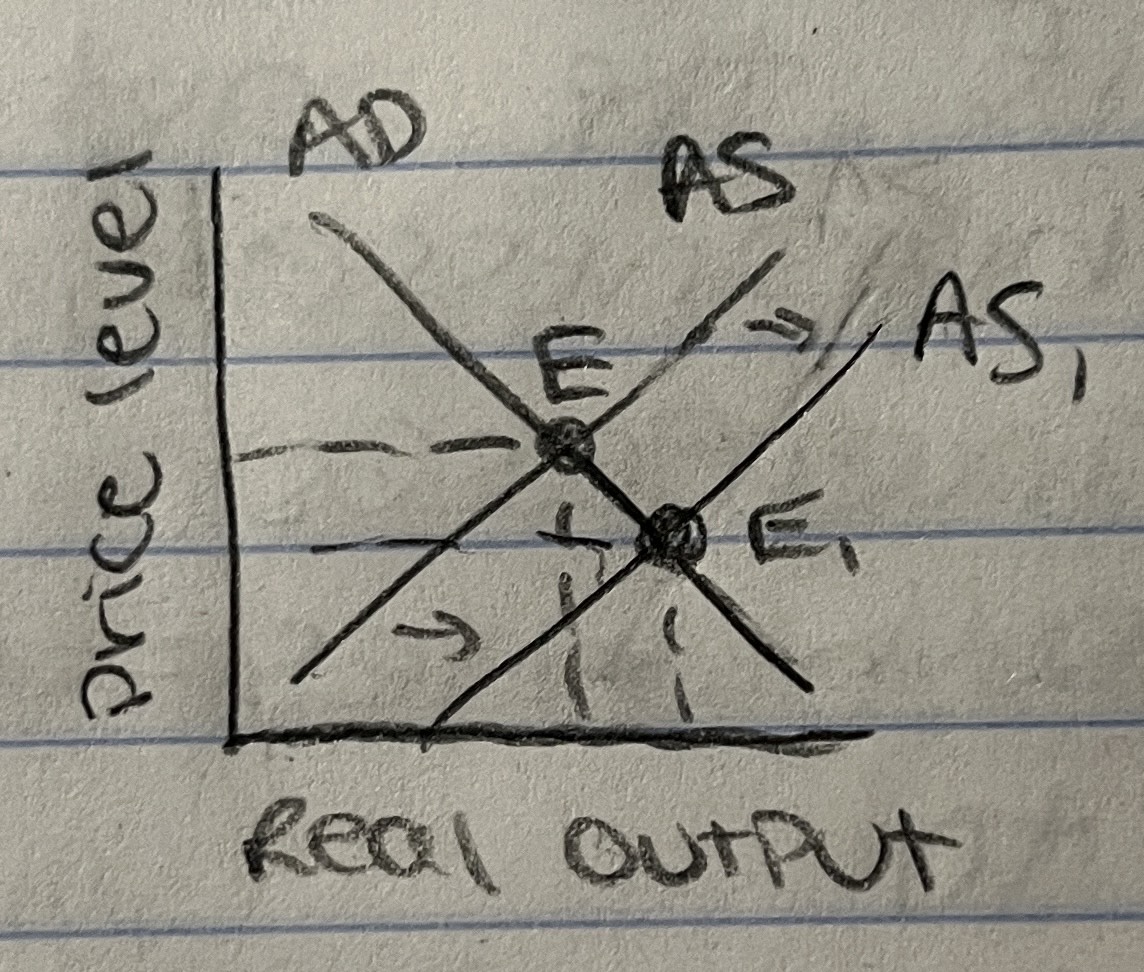
Price level decreases
Output increases
Employment increases
Decrease in Aggregate Supply
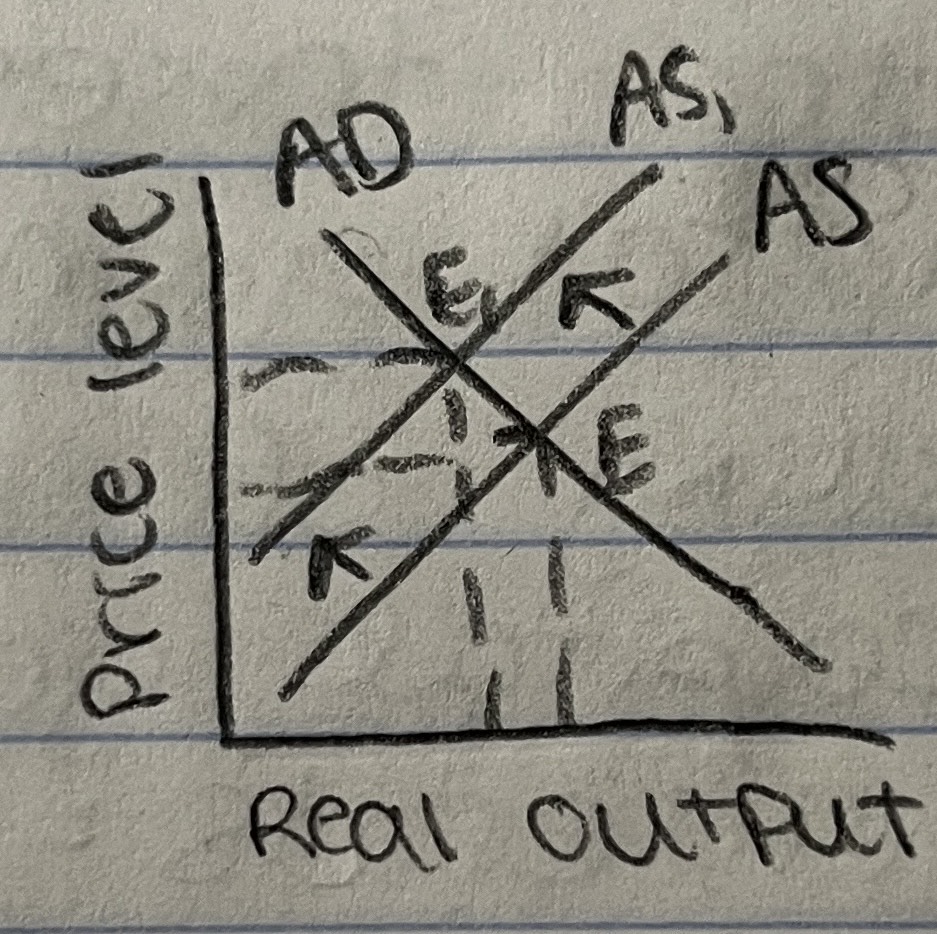
Price level increases
Output decreases
Employment decreases
Short Run vs. Long Run Aggregate Supply
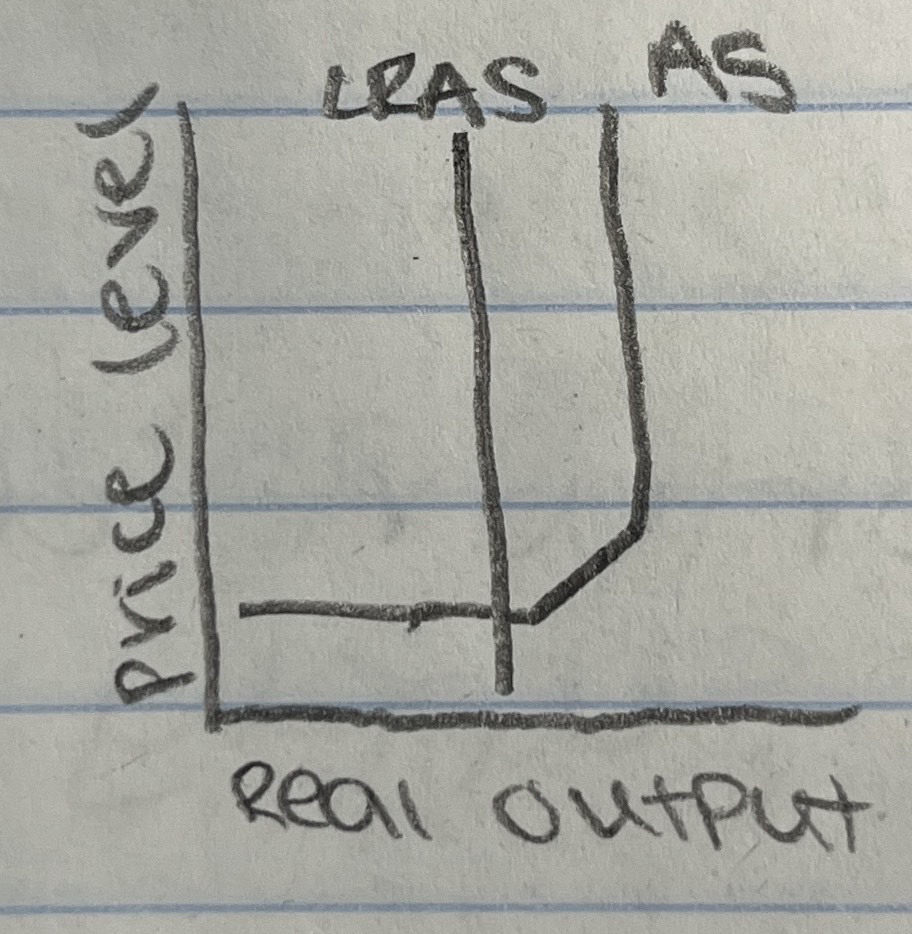
Short Run
Not a definitive time range
When prices and wages are sticky (inflexible)
Full employment at high level of output
You can produce more in the short run because you use your resources more intensively in the short run
you can require people to work A LOT of hours, but you can’t sustain that in the long run
Output level will fall unless long run aggregate supply is increased
Long Run
Wages and prices are flexible, can adjust
We’ll always have full employment in the long run
Fixed technology, efficient use of resources
Long run aggregate supply curve will shift if we develop more or better resources or have improvements in technology
economic growth
Keynesian vs. Classical Theory
Keynesian Theory
Output and employment are determined by the level of Aggregate Demand/Expenditures
demand side theory
Savers and investors are two different people, therefore; interest rates don’t automatically adjust to the level of savings; savings doesn’t always equal investment
Wages and prices are “sticky” (unions and monopoly power of business)
Unemployment is a reality
Economy CANNOT automatically adjust
government needs to take an active role in order for economy to achieve full employment
Aggregate supply curve is horizontal
only vertical at full employment (when government takes an active role)
Classical Theory
Say’s Law: supply creates its own demand
Interest rates automatically adjust to the level of savings; investment will offset the loss in savings
Wages and prices are flexible downward; full employment is always achieved
Economy can correct itself to full employment with little or no government intervention necessary (Laissez-faire)
Aggregate supply curve is vertical
Keynesian- Income Expenditure Model (AE Model)
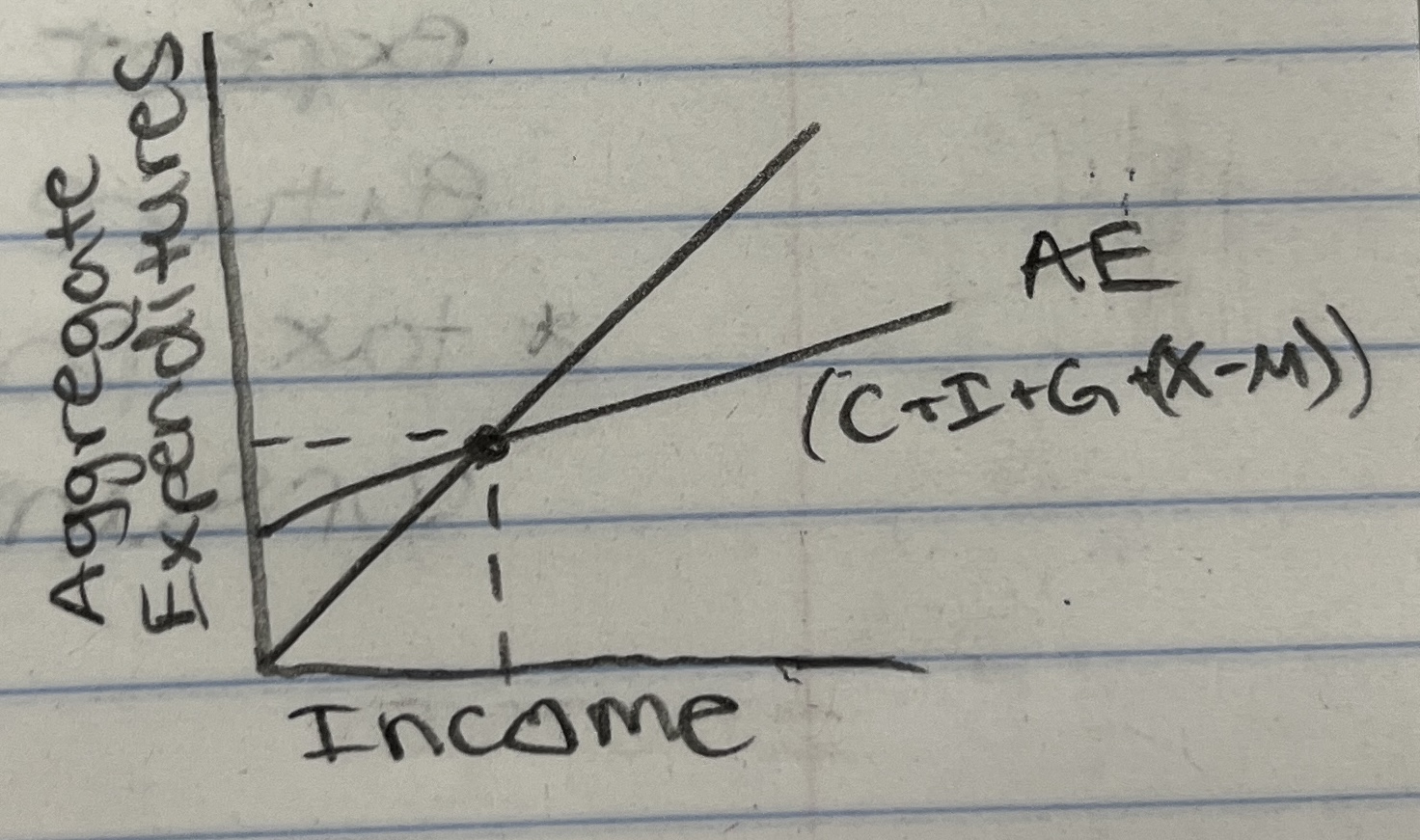
Assumes a fixed price level
Strength: you can see the effects of changes in consumption, investment, and government spending on the equilibrium level
1) Consumption and savings
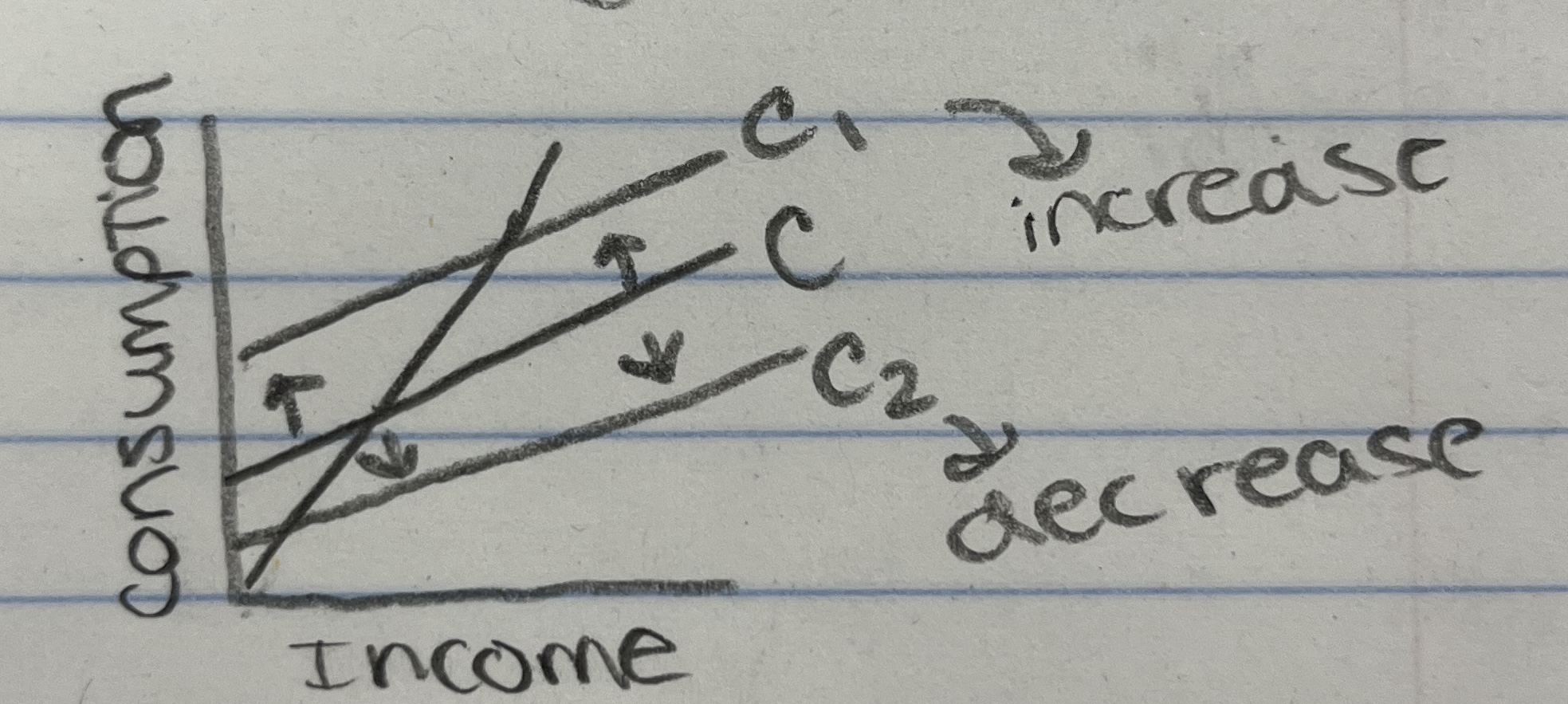
Two types of consumption:
Induced consumption
an increase or decrease in consumption caused by an increase or decrease in consumer incomes
Autonomous consumption
an increase or decrease in consumption at all levels of income (a shift)
increase shifts up, decrease shifts down
changes in real wealth → real wealth increases, consumption increases; real wealth decreases, consumption decreases
price level → price level decreases, consumption increases; price level increases, consumption decreases
consumer debt → consumer debt decreases, consumption increases; consumer debt increases, consumption decreases
consumer confidence → consumer confidence increases, consumption increases; consumer confidence decreases, consumption decreases
inflationary expectations → consumers expect higher prices in the future, consumption increases; consumers expect lower prices in the future, consumption decreases
tax policy → income taxes decrease, consumption increases; income taxes increase, consumption decreases
Marginal Propensity to Consume (MPC)
percentage of disposable income consumers spend on goods and services
(change in consumption / change in disposable income)
Marginal Propensity to Save (MPS)
percentage of disposable income consumers save
(change in savings / change in disposable income)
MPS + MPC = 100%
2) Investment
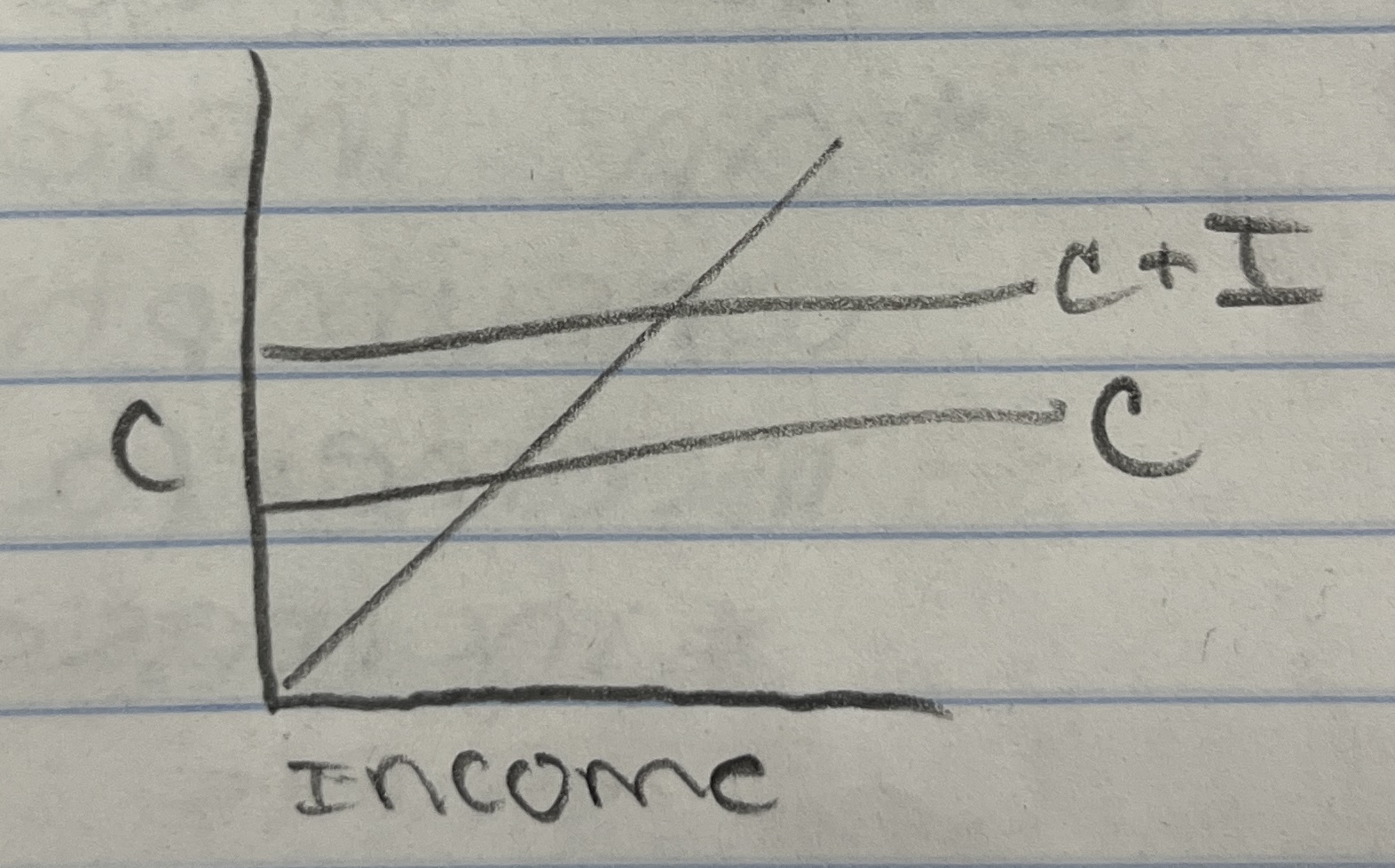
Determinants:
expected rate of profit → expected rate of profit is high, increase in investment; expected rate of profit is low, decrease in investment
real interest rates → real interest rates are low, investments will increase; real interest rates are high, investments will decrease
3) Spending Multiplier
the amount by which equilibrium GDP changes with a change in expenditures
(change in equilibrium / change in Aggregate Expenditure)
(1 / (1-MPC)) or (1 / MPS)
higher MPC, higher multiplier
4) Total Change in Real GDP (Income)
(initial change in spending x multiplier)
5) Tax Multiplier
(-MPC / MPS)
will always be negative
6) Recessionary Gap
occurs when equilibrium GDP falls short of full employment in a recession
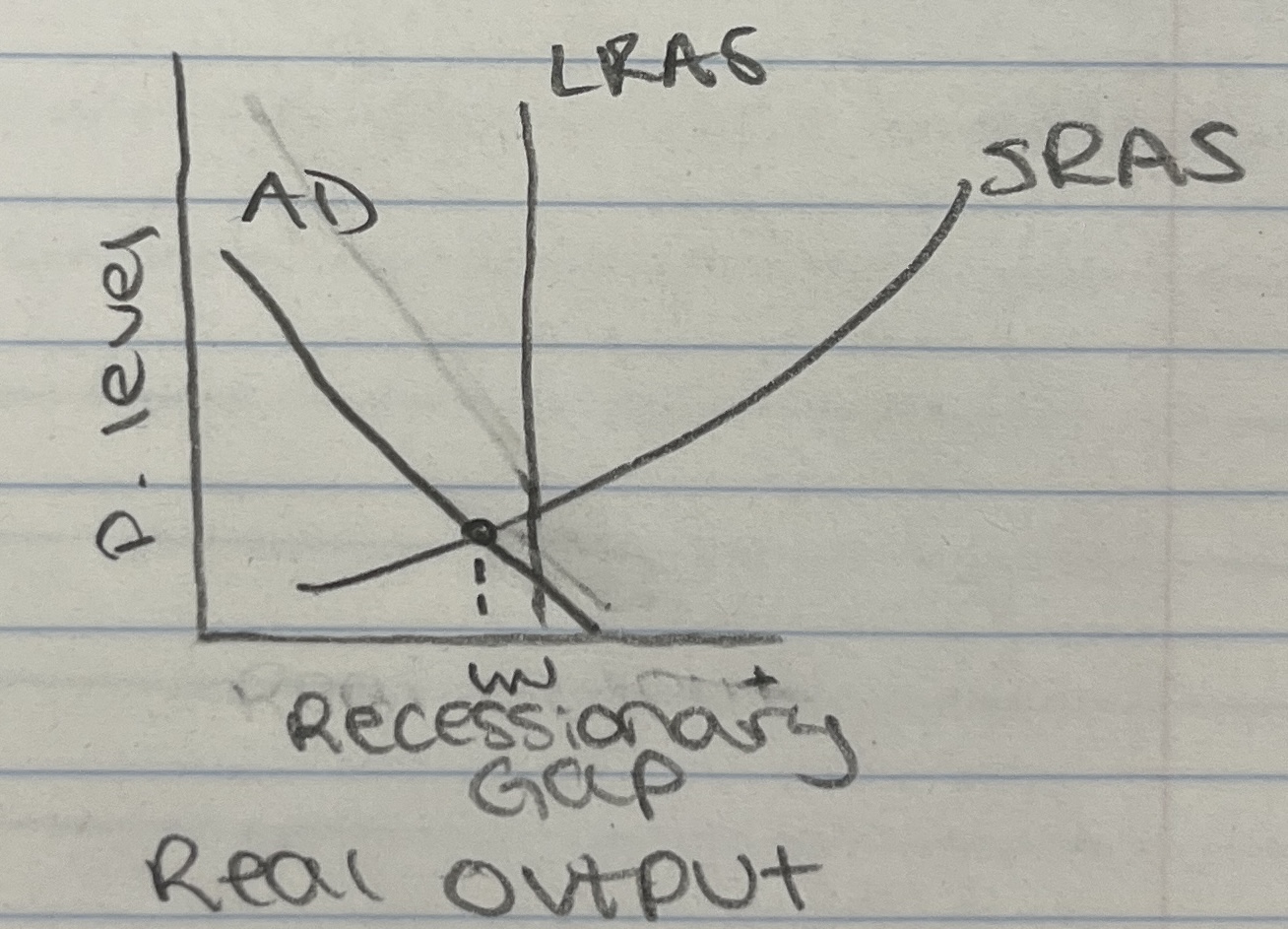
7) Inflationary Gap
occurs when equilibrium GDP exceeds full employment
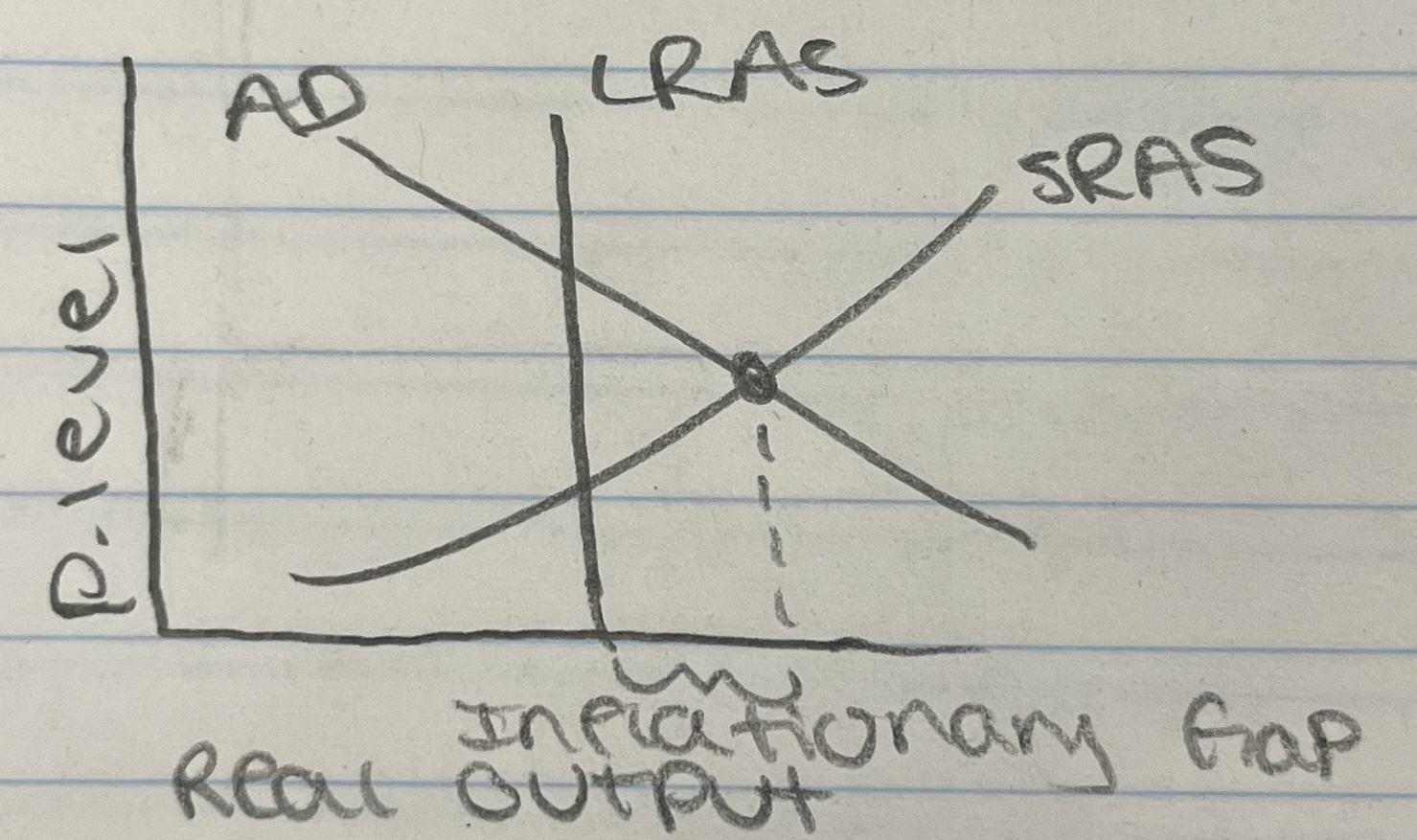
Fiscal Policy
Fiscal Policy
Changes in Federal income taxes and government spending to affect the level of Aggregate Demand (AD)
Implemented by the President and Congress
people who make decisions on fiscal policy are elected
fiscal policy is heavily influenced by politics
Use of spending multiplier is helpful
tax multiplier is also helpful
Expansionary Fiscal Policy
The goal is to increase aggregate demand and is used during a recession
Decrease income taxes and/or increase government spending
Balanced budget = spending is equal to taxes
budget isn’t balanced during expansionary fiscal policy
spending more than you collect in taxes
deficit spending
Contractionary Fiscal Policy
The goal is to decrease aggregate demand and is used to fight inflation
Increase in income taxes and/or decrease in government spending
Government collects more and spends less
contributes towards a budget surplus
Discretionary Stabilizers
The government must pass a law or take some specific action to change tax or spending policies
Deliberate action by government
Automatic Stabilizers
A policy change that happens due to a change in the economy
Recession → government spending goes up because more people are collecting unemployment; government receiving less tax revenue
deficit spending
Expansion → government spending decreases because less people are collecting unemployment; government receving more tax revenue
surplus spending